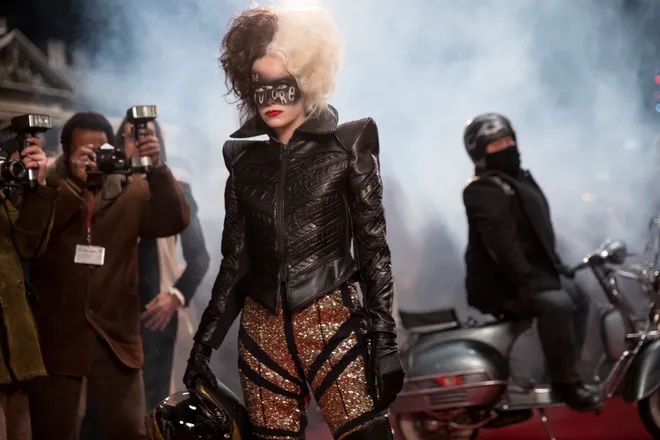
Each year the EnergaCAMERIMAGE International Film Festival expands its traditional focus on cinematographers to honor significant artists in other crafts categories.For the 31st Camerimage, Jenny Beavan was awarded for Costume Designer with Unique Visual Sensitivity. Beavan, a three-time Oscar-winner, accepted her award at the festival’s closing night ceremonies in Toruń, Poland.
Born in London, Beavan studied set design before accompanying Dame Peggy Ashcroft to India for the Merchant–Ivory production Hullabaloo Over Georgie and Bonnie’s Pictures. She continued working in costume design on A Room with a View (winning her first Oscar), The Remains of the Day, and other Merchant–Ivory productions.
Beavan has worked with directors like Robert Altman, Ang Lee, Brian De Palma, and Guy Ritchie. She received a second Oscar for George Miller’s Mad Max: Fury Road, and her third for the Disney production Cruella, directed by Craig Gillespie.
Beavan spoke with Below the Line at Camerimage.
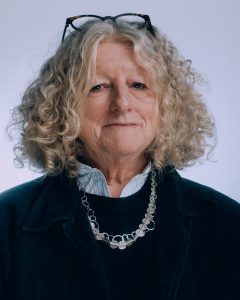
Below the Line: What’s your experience at Camerimage been like?
Jenny Beavan: I just got here, and I’m having a wonderful time. It’s just exhausting. I’m not a great one for festivals, but I was terribly thrilled by the title of the award here. “Unique visual sensitivity” is one of the nicest things you could tell someone.
BTL: How did you transition from theater to film?
Beavan: I always thought I’d be a set designer. That’s what I loved. Put me on an empty stage with a working light and I’m happy as a clam. I met Nick Young, and we became family friends. His trajectory took him to Melvyn Bragg’s Southbank show. They commissioned a Merchant–Ivory film, Hullabaloo Over Georgie and Bonnie’s Pictures, with Dame Peggy Ashcroft. Nick rang me and asked if I could put some costumes together for her. No money involved, so it would be her wardrobe and mine and whatever I could find.
I got on quite well with Dame Peggy, who changed her first class ticket to economy so I could accompany her. So I end up in Jodhpur, Rajasthan, and I’m immediately part of the family. I look after Dame Peggy, we share a room and a tot of whisky at night. I do costumes as needed. I do crowd collection, persuading hapless tourists to sit in scenes.
Jennifer Kendal was supposed to do a scene, but she couldn’t for some reason. So I ended up acting in the film, reading a poem to a child in bed. Coached by Dame Peggy Ashcroft.
They thought I was a costume designer, so on the next film they did, Ismail [Merchant] made me Judy Moorcroft’s assistant. By The Bostonians, I was collaborating with John Bright. That was my first big cast: Vanessa Redgrave, Christopher Reeve, Madeleine Potter.
BTL: What is your relationship with performers? Is there a give and take with their costumes?
Jenny Beavan: Absolutely. It’s teamwork. I offer what I think is right. (Hopefully I know who the actor will be, because that obviously informs what I’m choosing.)
For a film like White Bird, I did a lineup of clothes that might work. Almost like a notebook. I also have mood boards. I don’t overthink it. For example, I feel that color palettes find themselves on films. Then the actors will come in, often with something specific they’ve seen in the script that I might not have thought of. It’s very much a collaboration.
BTL: I’m not trying to put you on the spot, but have any performers fiddled around with your costumes?
Beavan: RDJ. Robert Downey, Jr., is the greatest at taking clothing and using it upside-down, back-to-front, inside-out. People told me I gave Sherlock such a modern twist. Well, I hadn’t. I provided perfectly acceptable clothes for the period. It’s Robert who takes them and does something to them. It’s like, I never thought of that. He took some of Jude’s old suits and gave them ideas that were absolutely great.
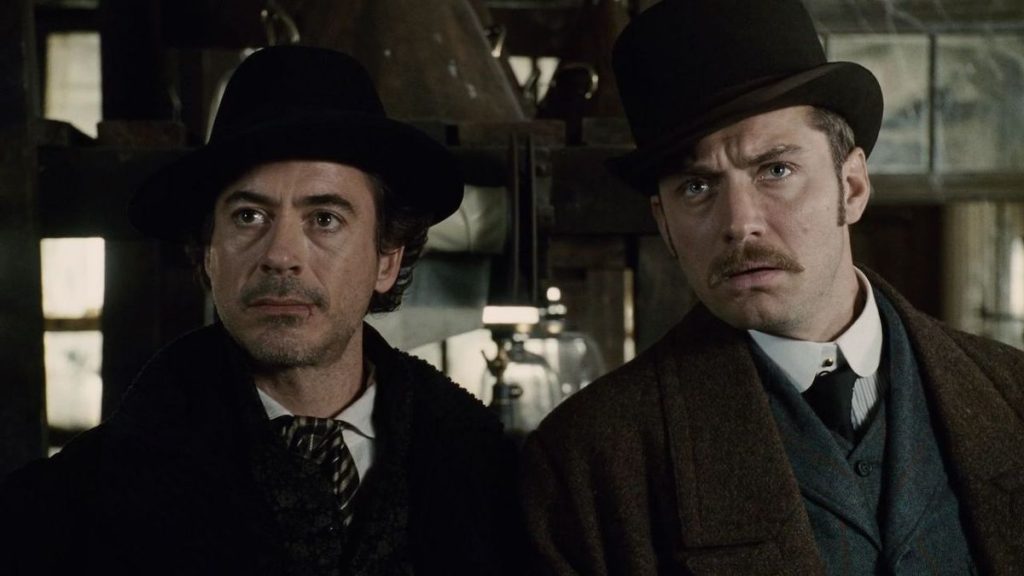
BTL: Your work in those films really helped the actors’ performances.
Beavan: I would maybe take some credit for some of the roles, but Robert Downey, Jr., is a law unto himself. He pushes me to the limit. Mad as a basket full of frogs and absolutely wonderful. I am terribly fond of him.
BTL: I love how over-the-top your costumes were for Cruella, but they wouldn’t be very practical in real life.
Beavan: Why not? They’re all perfectly wearable.
BTL: Aren’t they easy to damage?
Beavan: No, they’re made very strong, with good fabrics. Emma Stone’s red dress stood up to phenomenal abuse. That was probably the most awkward to wear. It was not easy to run in. Emma kept saying, “Don’t worry, I’ll make it work.” I told her we could put a slit up, but bless her, she did without. That dress stood up perfectly. We had three of them just in case.
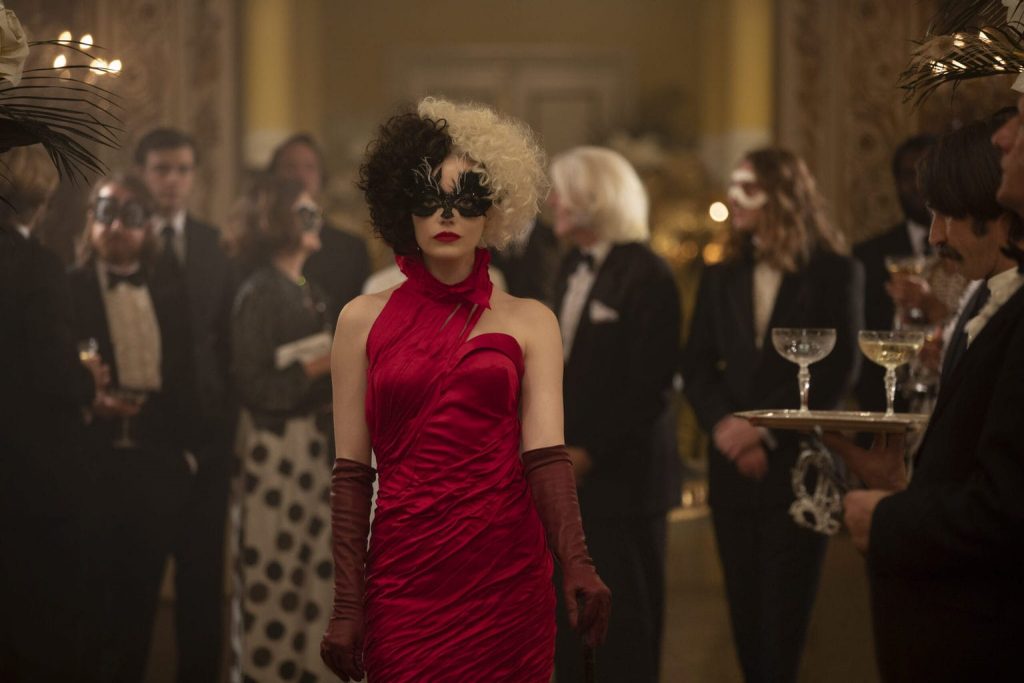
BTL: What can you say about White Bird?
Beavan: It’s a stunningly beautiful film we made in Prague. It should have come out by now, but I think they waited because of the strike. They want Helen Mirren and Gillian Anderson to be able to promote it.
Ariella Glaser, a wonderful young actress, plays a Jewish girl hiding in France during World War II. It’s based on a graphic novel by R.J. Palacio, who wrote Wonder. Helen Mirren plays a grandmother who gives advice to her grandson about bullying by telling him Ariella’s story.
The movie was beautifully shot by Matthias Koenigswieser, and it’s directed by Marc Forster, who did Christopher Robin.
BTL: What challenges did you face?
Beavan: Not many for me because it’s such a clear story. She winds up in a barn with nothing else, so everything she wears has to be from the family who take her in. They’re worried about collaborators spying on them, so they have to be very careful. They can’t suddenly go into town and buy her new clothes. So I had to think of what she could wear that might have belonged to Gillian Anderson, the mother, or her son Julian (Bryce Gheisar).
It was a lovely challenge, but not a difficult one. You’ve made sure the other characters are wearing things that can work as a shirt or whatever. She ends up wearing boys’ and men’s clothes. So for me it was quite straightforward 1940s France.
BTL: You must have an extensive knowledge of different time periods.
Beavan: Well, I learned them. I didn’t know at the time, I learned as we went along.
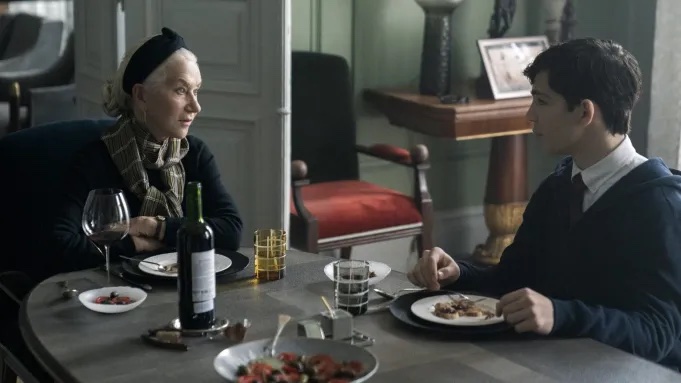
BTL: So I understand how you can research the past. How do you research the future for a film like Mad Max: Fury Road?
Beavan: Good question. That’s a tricky one. George Miller is an auteur. He knows what he wants. He also thinks he knows what everyone should look like. Of course he changes his mind, and he’s open to us bringing him stuff. But it’s very much his film. All of his films are George Miller films.
You’ve got the original films, which provide good parameters. And George is really good at mantras. One is: Keep it simple. The second is: If you don’t get it in three seconds, you’ve got it wrong. And things need to have purpose. They can’t be decorative, and they’ve got to be what you would find in the wasteland.
BTL: So everything has to be scavenged?
Beavan: It’s a brilliant directive because it focuses your mind. You’re not just whizzing around in airy fairy land. It’s got to be from stuff that’s salvaged.
We have a huge area in our department known as “Salvage.” We can all go and shop there. You can get great inspirations. An awful lot of cutlery and dead mobile phones — stuff that they had no use for anymore because they couldn’t charge them, for example. Everything in Fury Road had a purpose, and it was to keep them alive or protect their bodies.
BTL: Did you watch the earlier movies?
Beavan: Oh yes, of course. The first one has the most extraordinary feeling of being on the tipping point of civilization. George hit that feeling of not knowing what tomorrow would be like. I still get hairs on the back of my neck.
The second one, Road Warrior, I found too S&M. And Mad Max Beyond Thunderdome I never got my head around. It’s like Marmite.
BTL: Fury Road reimagines the entire mythos.
Beavan: The story was so good. I mean, there’s nothing to it. You go to find something and it’s no longer there, so you have to come back and make the best of what you have.
BTL: Did you have to worry about the costumes being damaged in Fury Road?
Beavan: That is part of the logistics of the job. You can tell from the script what the costumes are probably going to go through. You talk to the stunt people, to the camera department. You talk to everybody about what you need and you make it appropriately. We had enough money, so if we needed twenty repeats, we made them.
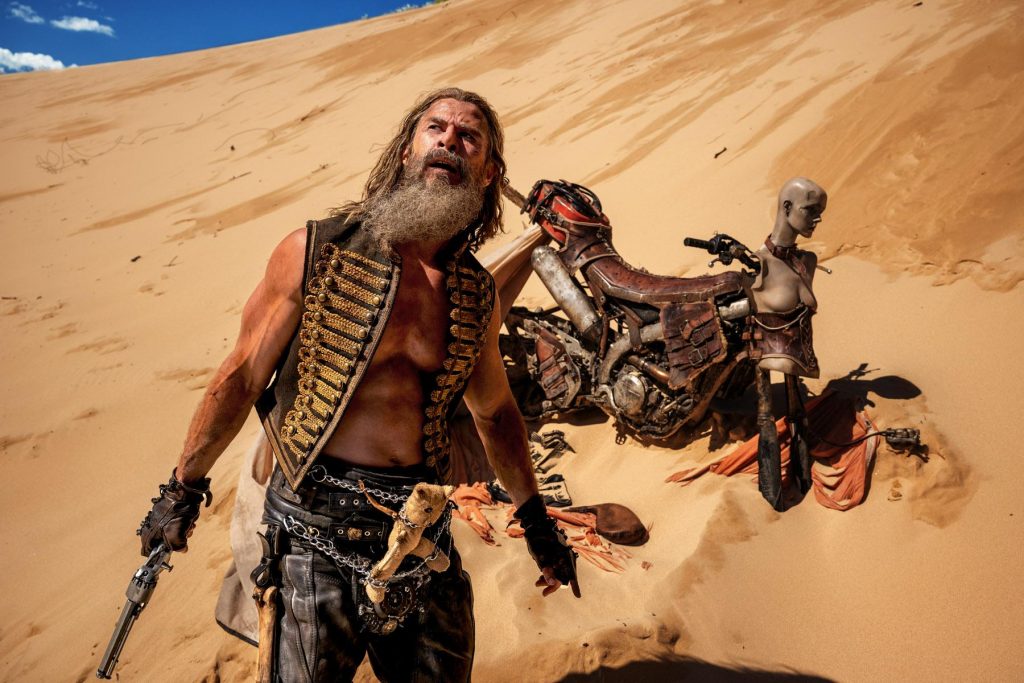
BTL: How do you make sure the actors won’t get injured, say by the metallic elements of your costumes?
Beavan: We always make sure stunts are happy. The costumes were mainly leather and natural things. The worry was that so many of the stunt performers were bare-chested. Those pole cats, I think they trained with Cirque du Soleil. They just shot up those poles. They had harnesses, but it’s still dangerous.
For us, it was just make sure everyone’s happy. If they need Teflon suits so they can be set on fire, we can do it. When you think about it, you see the stunt guys for maybe a nanosecond. So if they’re suddenly fatter with padding, nobody notices.
BTL: The stunts in Fury Road are mostly practical, which really sets that film apart.
Beavan: With the new one [Furiosa], I think George has gotten slightly more into visual effects. He’d say to me, “Don’t worry, Jenny, we can always fix it in post.” And I’m thinking, don’t say that, we should be doing it in camera, properly.
But George is who he is, and I adore him. He’s an incredible, gentle, wonderful person who drives you absolutely up the wall. You want to kind of kill him and hug him at the same time.
BTL: What can you say about Furiosa?
Beavan: It was massive production. It seemed much bigger than Fury Road. We’re just telling the backstory of Charlize Theron’s character, so it’s the young girl growing up to be Furiosa.
We didn’t change our approach to costumes very much. They don’t have a wasteland supermarket for clothes.
BTL: Maybe she still has her arm.
Beavan: Maybe she does.





